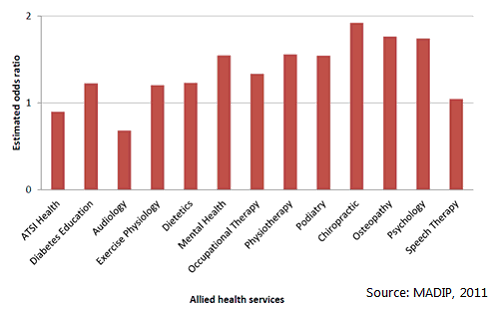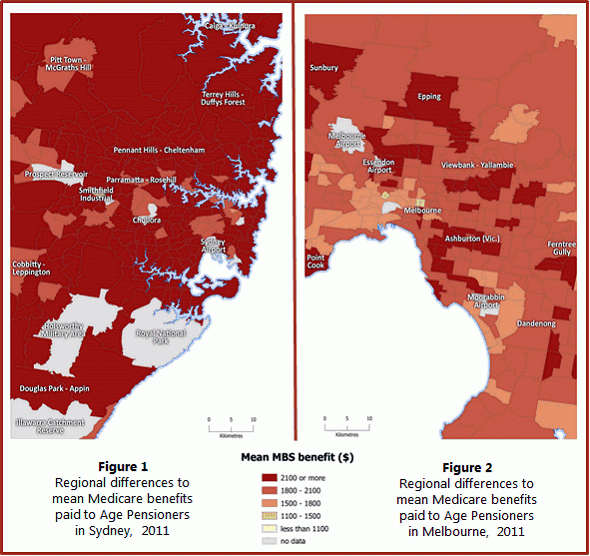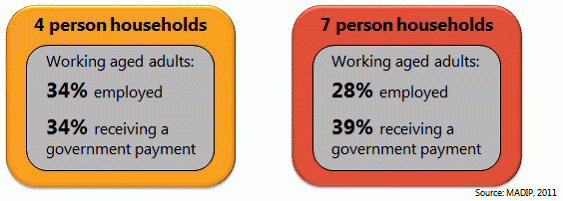PLIDA/MADIP Case Studies
The Person Level Integrated Data Asset (PLIDA) (formerly known as MADIP) includes integrated data on health, education, government payments, income and taxation, employment, and population demographics to create a comprehensive picture of Australia over time.
The linked data provides a robust evidence base for research whilst ensuring the privacy and confidentiality of Australians' personal information at all times.
Approved researchers use PLIDA data to look at patterns and trends in the Australian population, and provide new insights to support important research and the development of government policies, programs, and services.
The data used in the case studies below remains available in PLIDA.
Case Study 1 - Helping vulnerable Australians survive heatwaves
The Australian Bureau of Statistics (ABS) partnered with the Bureau of Meteorology (BoM), the Department of Health, the University of Adelaide, Geoscience Australia, and the Department of Agriculture, Water and the Environment to analyse data from MADIP to improve understanding of Australians that are most at risk in heatwave conditions.
This collaboration was led by the BoM as part of Data Integration Partnerships for Australia (DIPA). It involved the use of custom MADIP data containing demographic characteristics and deaths information, as well as indicators of chronic disease.
Approved analysts within the ABS DataLab were able to explore links with weather observations and environmental characteristics, such as dwelling type and remoteness from health services. They used the data to measure the likelihood and impact of a person getting sick or dying during heatwave conditions.
The project built a national map of heat health vulnerability with various insights, including:
- Approximately 2% of deaths are attributable to heatwaves each year
- Visits to emergency departments, general practitioners and certain specialists significantly increase during heatwaves
- Nationally, individuals over 64 years are 2% more likely to die during heatwaves
- Contemporary housing, as measured by factors such as building age and building construction type, has a stronger association with heat related deaths than housing from other periods
- Large rural towns have the highest elevated risk for heatwave deaths.
These findings have provided an evidence base to support the development of better government services to help vulnerable Australians survive future heatwaves, including local interventions such as forecast warning systems. The project has built interest and confidence in the analysis of MADIP data which could be applied to understanding the impact of other natural hazards in future.
Data Analyst, Matt Beaty, of the Department of Health said “the ABS was central to the success of the multi-agency partnership’s delivery of the heatwaves project, and the collaboration would not have been possible without the ABS.”
Case Study 2 - Measuring the effect of education on the retirement outcomes of older Australians
Government policy objective:
To improve the wellbeing of older Australians while reducing expenditure on Age Pension welfare payments. Linking 2011 Census data with Medicare and payments data shows that educational attainment affects labour force participation and the retirement experience of older Australians. These findings can help guide education and industry policies to improve the wellbeing of older Australians in the workforce and in retirement.
What is the policy problem?
For a range of reasons, as people age they can be less able to participate in the workforce. This may have a negative impact on their financial independence and wellbeing. With the number of older Australians expected to more than double over the next 40 years, the Government is looking at ways to support them remain in work and/or maintain their financial security in retirement. Understanding the factors that impact on people's working lives and during their retirement can help inform policy solutions that better address the needs of older Australians.
What is the data challenge?
Data that quantifies the role of education in extending work life is based on surveys with limited sample size, restricting the ability to examine the characteristics of retirees in any real detail.
What has the project let us do?
The project found that an individual's labour force participation varied according to their educational attainment. For example, people who had higher levels of education tended to have longer working lives.
What were the findings?
In 2011, one in three individuals aged 65 to 70 years with university degree qualifications were self funded retirees, compared with around one in five for those who completed Year 12 or below.
Source: MADIP, 2011
In 2011, Australians with tertiary qualifications were less likely to be receiving the Age Pension that people with lower levels of education. The proportion of Australians receiving the Age Pension increased with age, regardless of level of education.
Source: MADIP, 2011
These findings demonstrate how the better use of existing public data can help guide education and industry policies to improve the wellbeing of older Australians in the workforce and in retirement.
Case Study 3 - Understanding the socioeconomic characteristics of Australians using Medicare services
Government policy objective:
To improve Australians' access to health care services by understanding the socioeconomic characteristics of Medicare use. Linking the 2011 Census with Medicare data provides insight into Government health care costs and reveals differences in service use by Australians. The findings have the potential to guide policy and ensure that our health care system is reaching those who need it most.
What is the policy problem?
About two-thirds of the cost of health care is paid by government with a significant portion of this cost relating to the care of people with chronic medical conditions. A range of factors are associated with chronic disease. For example, research shows that people living in lower socioeconomic areas have poorer health outcomes than those living in higher socioeconomic areas. Understanding these socioeconomic differences of people with chronic disease is the key to building an accessible health system for Australians.
What are the data challenges?
A strong evidence base was not available to allow analysis of the characteristics of those receiving Medicare-subsidised services, limiting our ability to understand how our health care dollars are being spent.
What has the project let us do?
Connections between Medicare service use and socioeconomic factors at the population-level are discoverable through the linked dataset. The linked data has shown that suitable information can be created for policy analysts to inform policy development and the allocation of health care resources, whilst ensuring the privacy and confidentiality of personal information.
What were the findings?
Low income households generally had greater use of health services than higher income households in 2011. Compared with higher income households, people from low income households were:
- 1.9 times more likely to use chiropractic services
- 1.8 times more likely to use osteopathy services
- 1.7 times more likely to use psychology services
- 1.5 times more likely to use mental health services
The odds ratio of people from low income households accessing allied health services compared to people from higher income households

These findings demonstrate how better use of existing public data can inform our understanding of socioeconomic differences of Australians using health care services, to guide policy development and improve access to these services.
Case Study 4 - A geospatial perspective of Medicare use by Age Pension recipients
Government policy objective:
To improve older Australians' access to health care services by understanding the geographic patterns of Medicare use. Mapping linked 2011 Census and Medicare data has provided new insights into health care costs and revealed regional differences in health service use by older Australians. These findings can help inform policy and support the allocation of resources to the people and places that need it most.
What is the policy problem?
Understanding the health care service needs for people living in different areas is vital for building an accessible health system for all Australians. The availability of certain health care services, proximity to providers, and transport options for people needing to access these services vary depending on where a person lives in Australia.
What is the data challenge?
No robust evidence exists on the relationship between receipt of Medicare benefits and receipt of other payments such as the Age pension, including how this varies across Australia.
What has the project let us do?
The project found geographic differences in Medicare expenditure across Australia that can inform policy development and the allocation of health care resources. For example, residents in regional and remote areas tended to claim less health care services than those who live in capital cities. The linked data has provided a robust evidence base for policy analysts, while ensuring the privacy and confidentiality of older Australians' personal information.
What were the findings?
Across Australia, Medicare services are used more by Age Pension recipients living in the major population centres of each state and territory than those in regional and remote areas.
These maps of Sydney and Melbourne illustrate the further variations in the use of Medicare services within capital cities. In Sydney, older Australians on the Age Pension make high use of Medicare services. By contrast, in Melbourne, the use of Medicare services by older Australians on the Age Pension varies considerably from suburb to suburb.
Image

Description
These findings demonstrate how the better use of existing public data can help inform the development of health policy and the allocation of health care resources to improve the wellbeing of older Australians.
Case Study 5 - Understanding the characteristics of those at risk of homelessness
Government policy objective:
To improve outcomes for vulnerable Australians by better understanding the characteristics of those at risk of homelessness. Linked 2011 Census and social security data shows that household size and labour force participation affect the risk of homelessness for Australians. These findings will help inform policy and guide welfare service provision to reduce the risk of homelessness for vulnerable Australians.
What is the policy problem?
Homelessness is a complex problem that affects thousands of Australian families and can extend across several generations. It is a challenge for governments to address due to the large number of factors that contribute to the risk of homelessness for vulnerable people. Understanding the characteristics and life pathways of those at risk is essential to providing effective government services. These services can then help vulnerable people to maintain secure housing arrangements and the financial independence needed to support their families into the future.
What are the data challenges?
There is very limited data on the living arrangements of people receiving income support (including whether they are at risk of homelessness) with most data based on surveys that have a limited sample size.
What has the project let us do?
The project found clear differences between the characteristics of people at risk of homelessness and those not at risk. For example, working-age members of vulnerable householders were less likely to be in employment than those from non-vulnerable households. The linked data provided robust evidence for policy analysts to determine and investigate the characteristics of small, hard-to-reach groups of vulnerable Australians, while ensuring the privacy and confidentiality of their personal information.
What were the findings?
Image

Description
In households at risk of homelessness, people were much more likely to receive social security payments. This pattern remained consistent across smaller and larger households.
People in smaller at-risk households, with 3 to 5 members, were more likely to be employed and not receiving social security payments compared with individuals who lived in larger at-risk households with 6 or more members.
In at-risk 4-person households, people were equally likely to be employed and to be receiving social security payments.
These findings demonstrate how the better use of existing public data can inform our understanding of the characteristics and outcomes of groups/those who are at risk of homelessness to target policies and services to help reduce homelessness in Australia.